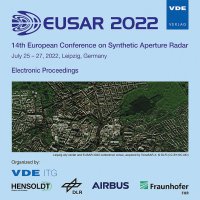ROSE-L Tandem – Bistatic Extension for Single-Pass Interferometry
Conference: EUSAR 2022 - 14th European Conference on Synthetic Aperture Radar
07/25/2022 - 07/27/2022 at Leipzig, Germany
Proceedings: EUSAR 2022
Pages: 4Language: englishTyp: PDF
Authors:
Bachmann, Markus; Zink, Manfred; Bojarski, Allan; Martone, Michele; Kahle, Ralph; Krieger, Gerhard; Pardini, Matteo; Reimann, Jens; Schandri, Maximilian (German Aerospace Center (DLR), Oberpfaffenhofen, Germany)
Geudtner, Dirk; Duesmann,Berthyl; Shurmer, Ian (European Space Agency (ESA), Noordwijk, The Netherlands)
Kujiper, Dirk (CS Group - Germany GmbH, Germany)
Abstract:
ROSE-L (Radar Observing System for Europe) is a future L-band SAR system developed in the frame of the ESA Copernicus Program. It will consist of two monostatic satellites in constellation. “ROSE-L Tandem” is a concept to extend this system by a third satellite. This third satellite will fly in close formation with one of the two monostatic ones to create a bi-static, single-pass SAR interferometer. The main applications of the system are tomographic observations of forest and ice as well as the generation of a global Digital Elevation Model (DEM). A joint DLR-ESA study was conducted to determine the technical impact on the ROSE-L satellite design. This paper describes the necessary add-ons for such a bistatic extension. Starting from high-level requirements for tomography and DEM generation, additional system requirements are derived, a basic observation scenario with the needed formations and amount of fuel is introduced and the necessity and feasibility of phase synchronization via a dedicated RF-sync link between the satellites is assessed.


